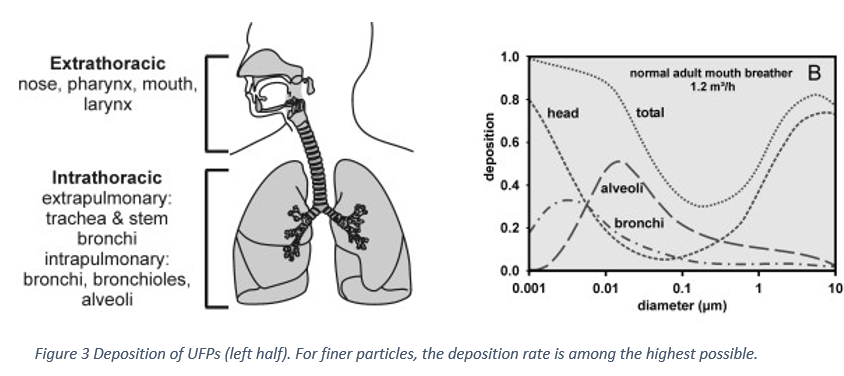Figure 1 Some prominent UFP sources: laser printers, combustion processes, electric motors and tobacco smoke.
Nanoparticles: What are they?
Nanoparticles, also called ultrafine particles, are solid substances of 100 nanometres or less in diameter. UFP are present in all kinds of environments both outdoors and indoors; in 2008, emissions in the whole of Europe were estimated around 271’000 tonnes.
UFPs are under scientific scrutiny, mainly due to how easily they can penetrate in the human body, via inhalation, consumption or even dermal contact.
Indoor nanoparticles: a complex cocktail
Nanoparticles can be produced both indoors and outdoors. They are generally divided in two categories depending on its origin: particles of combustion and non-combustion origin.[1]
Combustion is the most prominent origin, as in this category fall very common instances like cooking, smoking or candle flame. In contrast, the main non-combustion sources of nanoparticles are emissions from brush electric motors (common example are vacuum cleaners) and chemicals like air fresheners and perfumes.
Other sources, prevalent in office buildings, are laser printers. These include volatile or semi-volatile organic compounds that are mainly diffused by the fuser used to stick the ink to the paper, as well as other substances present in printers, like flame retardants. This should not be a surprise as the fuser can reach temperatures up to 210°C during printing, and particle emission rates from most materials increases with temperature.
A similar process can be observed in 3D printers, as their working principle relies on heating various thermoplastic materials, usually plastics. As plastics are organic compounds, these processes, in which the nozzle temperature can reach 240°C, release many types of VOCs. 3D printers are however way less common.
Outdoor emissions are the most common. These, although generated outside, can still penetrate inside built environments trough air exchange. This penetration can be estimated through the infiltration factor F_in :
F_in = (a • P) / (a + P)
Where a is the air exchange rate, P is the penetration factor and K is the deposition rate of the considered particle.
The most common outdoor sources are:
Natural:
The main natural emitters of UFPs are forest fires and volcano eruptions. Like most combustion processes, these reactions create a great quantity of ultrafine particles. They happen usually far from urban centres, However, so they get considerably diluted and mixed with less contaminated air.
Another source of UFPs is marine aerosols, present in coastal areas. This kind of nanoparticles does not include combustion residues, instead being composed for the most part of biogenic particles, generated by algae and plankton. These substances can then suffer ulterior transformations and divisions due to sunlight exposure (photolysis).
Industrial:
Many industrial processes emit particles of all kinds and sizes. The kind of particle emitted depends heavily in the materials and transformations that take place, but mostly originate in combustion processes.
One example are steel factories. Observations made show the presence of heavy metal dusts and polycyclic aromatic hydrocarbons (known as cancerogenic) of very small size, below 100 nm.
Another example would be waste incineration plants, which are critical since a variety of materials are burned, potentially creating a myriad of different nanoparticles. Measurements have shown that despite heavy decantation and filtering, nanoparticles are still being dispersed. Chemical elements with lower boiling points, like arsenic, Cadmium or zinc are prevalent in their composition.
Transport:
The transportation industry is another important source of nanoparticles, due to the multiple combustion processes involved. Road, marine and air traffic are considered the most responsible.
Domestic heating:
Heating systems that rely on combustion are also important sources of nanoparticles. Heating may run on a variety of fuels like wood, coal, and oil, but the production of nanoparticles is mostly attributed to solid fuels. Biomass, which is used as an ecological alternative to traditional fuels, also contributes to the production of nanoparticles.
Of course, some sources are more relevant than others when it comes to indoor penetration: for example, road traffic and domestic heating emissions are more relevant in urban contexts. Considering the multiple origins of UFPs, every location is exposed to its own particular mix of nanoparticles. And, as if things were not complicated enough already, these nanoparticles are subject to all kinds of transformations due to sunlight exposure and reaction with other substances.

Different sources, different exposures
As it can be seen, most pollutants are produced outside. The critical situation is however found inside buildings, mainly due to differences in exposure. But what is exposure?
Exposure is, simply put, the product between the concentration of a pollutant in a certain environment and the time spent in such environment.
Of course, each day a person will enter multiple environments, each one with a different concentration. So, the final exposure is the sum of the concentrations of each environment, integrated over time.
The key point here is the time of exposure. Although people like to blame Covid for not being able to go outside, people didn’t spend that much time outside to begin with; a person will, in normal conditions, spend from 10 to 20 times more time inside than outside. This means that, even if the concentrations may be smaller indoors for certain pollutants, the exposure to the same pollutants may be higher indoors, where the residence times are much higher. In any case, for UFPs, indoor particles stay predominant indoors. [2]
As it can be seen in the figure above, nanoparticles of 100 nm or less in diameter reach concentrations of 20’000 – 50’000 particles per cubic centimetre. It’s more difficult to state the concentrations directly inside breathing zones, as the concentration of any pollutant can only be considered constant under some specific circumstances. Distance from the particles’ source definitely plays a role in local concentration levels.
The size of these particles plays a vital role in exposure: being light, their deposition is lower compared to bigger particles, but on the other hand, resuspension from human activities is also low.

Present (and future) challenges
All things considered, UFPs represent one of the latest challenges in indoor air quality, but also in the medical field. Their size is so small that they can infiltrate de bloodstream, potentially bringing other dangerous substances together with them. Because of this, they are suspected to be at the origin of many respiratory and cardiovascular pathologies. Their prevention, as well as their identification and potential risks, are and will be a topic of intensive research in the foreseeable future.
Sources:
[1] Manigrasso et al., “Where Do Ultrafine Particles and Nano-Sized Particles Come From?”
[2] Wallace, “Indoor Sources of Ultrafine and Accumulation Mode Particles.”

